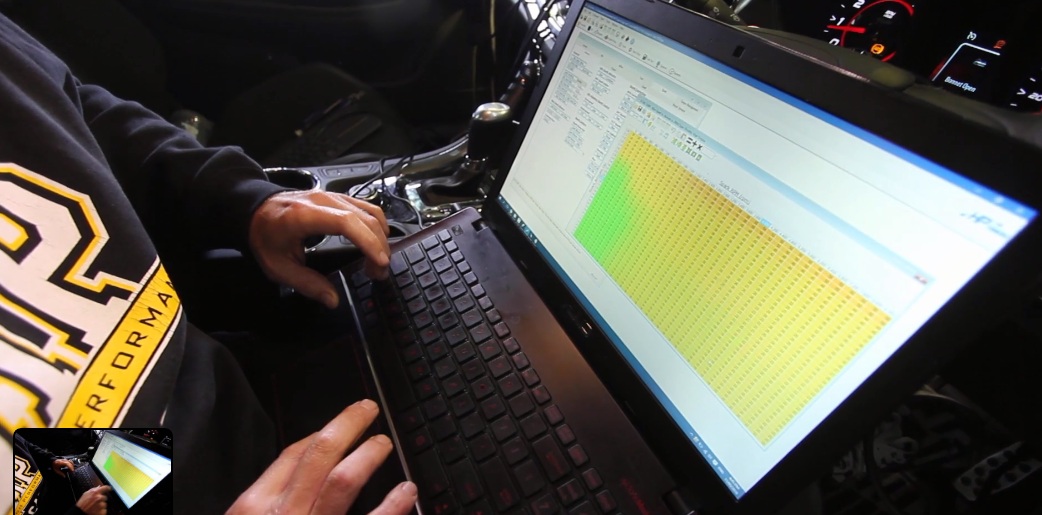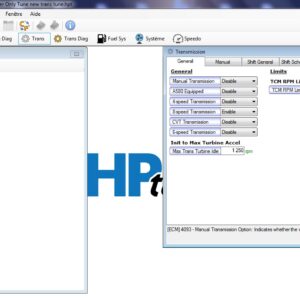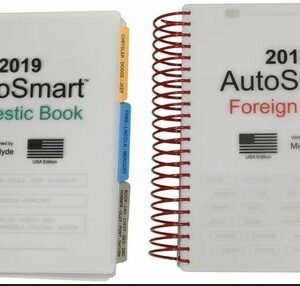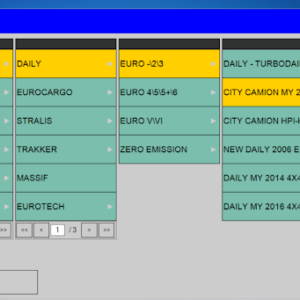HPAcademy Practical Standalone Tuning Course
Original price was: $229.00.$160.00Current price is: $160.00.
Description
Learn to Tune your Standalone ECU, Start to Finish
Want to learn how to tune your standalone ECU from start to finish with or without a dyno? This course is the perfect place to gain and apply that knowledge with step by step guidance.
Whether you have a MoTeC, Link, AEM, Fueltech or any other ECU – it doesn’t matter. This course will teach you the HPA 10 step process that will apply to your ECU, and your engine. Using this process you can reach peak power and torque, while still retaining the reliability you need from your engine.
As a rule, to get the most from your engine, a quality dyno is the best place to perform your tuning. This allows the tuner to simulate load on the engine, while simultaneously measuring all of the key metrics we need to monitor to optimise the tune.
But – it’s a fact that not everyone has access to a dyno. The detailed road tuning section in the course combats this, by teaching you the road tuning processes and techniques to ensure an optimized tune – whether you have access to a dyno or not.
Even if you understand the principles of EFI tuning, tuning on a dyno or the road for the first time adds another element of learning. This course will give you the necessary skills to tune any engine from start to finish – whether it be on a dyno, or the black stuff. In particular you will learn:
- How to configure your ECU to suit the engine
- What numbers to put in the fuel and ignition tables before you start
- How to get your engine running for the first time
- How to use the dyno to control load and engine speed
- How to tune the fuel map in steady state
- Driving Techniques for road tuning
- How to tune fuel and ignition using the dyno or road/track
After completing this course you will have the confidence and skills required to properly calibrate your standalone ECU on the dyno or road/track. You will learn HPA’s ’10 Step Process’ which will take you through a tuning job from start to finish, ensuring you don’t miss any critical stages.
This course assumes an understanding of EFI tuning fundamentals. If you are new to tuning, we recommend you start with our EFI Tuning Fundamentals course before taking this one.
WHAT YOU WILL LEARN
- A 10 Step process for configuring and tuning on the ROAD and DYNO
- How to configure your fuel and ignition maps
- First start considerations and settings for your engine
- How to tune fuel and ignition in steady state
- Fuel and ignition tuning using ramp runs
- How to tune almost ANY standalone ECU on the market
Course Curriculum
DISCLAIMER
Disclaimer
GETTING STARTED
Introduction
The HPA 10-Step Process
How to Use This Course
Tuning on the Road or Racetrack
Tuning a Turbocharged Engine
STEP 1: ECU CONFIGURATION AND TESTING
Introduction
ECU Configuration
Input Setup and Testing
Output Setup and Testing
Fuel Configuration and Testing
Ignition Configuration and Testing
STEP 2: TRIGGER SETUP
Introduction
Reluctor Sensor
Hall Sensor
Filtering
Arming Threshold
Trigger Mode
STEP 3: BASE TABLE CONFIGURATION
Introduction
Fuel Table Configuration
Ignition Table Configuration
STEP 4: BASE IGNITION TIMING / FUEL PRESSURE
Introduction
Setting Base Ignition Timing – Pre Startup
Setting Base Ignition Timing – Post Startup
Setting Base Fuel Pressure
STEP 5: INITIAL STARTUP
Introduction
Making Coarse Adjustments
What You Should Look For
STEP 6: IDLE TUNING
Introduction
Idle Ignition Timing
Idle Mixture
Spotting Problems
Idle Speed Control Settings
STEP 7: STEADY STATE FUEL TUNING
Introduction
Choosing Air Fuel Ratio
Using the Dyno to Tune Steady State Fuel
STEP 8: STEADY STATE IGNITION TUNING
Introduction
MBT Tuning Technique
Using the Dyno to Tune Steady State Ignition
STEP 9: FULL POWER TUNING
Introduction
Performing a Ramp Run
Optimising Your Tune on the Dyno
STEP 10: CONFIRMING A TUNE ON THE ROAD / TRACK
Introduction
Cruise Tuning
Full Power Tuning
Transient Tuning
Using Datalogging
ROAD TUNING – TUNING WITHOUT A DYNO
Road Tuning Introduction
Disclaimer
Driving Techniques
Table Configuration
Steady State Tuning
Full Power Tuning
TUNING A TURBO ENGINE
Introduction
Considerations
Base Configuration
Steady State Tuning
Full Power Tuning
High Boost Tuning
WRAP UP
Conclusion
ADAPTRONIC – ROTARY TUNING EXAMPLE
Introduction
Step 1: ECU Configuration and Testing
Step 2: Trigger Setup
Step 3: Base Table Configuration
Step 4: Base Ignition Timing/Fuel Pressure
Step 5: Initial Startup
Step 6: Idle Tuning
Step 7: Steady State Fuel Tuning
Step 8-A: MBT Testing
Step 8-B: Steady State Ignition Tuning
Step 9: Full Power Tuning
Step 10: Confirming the Tune on the Road/Track
AEM INFINITY
Introduction
Step 1: ECU Configuration and Testing
Step 2: Trigger Setup
Step 3: Base Table Configuration
Step 4: Base Ignition Timing/Fuel Pressure
Step 5: Initial Startup
Step 6: Idle Tuning
Step 7: Steady State Fuel Tuning
Step 8: Steady State Ignition Tuning
Step 9: Full Power Tuning
Advanced Tuning Topics – Infinity Series
HALTECH ELITE
Introduction
Step 1: ECU Configuration and Testing
Step 2: Trigger Setup
Step 3: Base Table Configuration
Step 4: Base Ignition Timing/Fuel Pressure
Step 5: Initial Startup
Step 6: Idle Tuning
Step 7: Steady State Fuel Tuning
Step 8: Steady State Ignition Tuning
Step 9: Full Power Tuning
Advanced Tuning Topics – Elite and Platinum Series
ECUMASTER
Introduction
Step 1: ECU Configuration and Testing
Step 2: Trigger Setup
Step 3: Base Table Configuration
Step 4: Base Ignition Timing/Fuel Pressure
Step 5: Initial Startup
Step 6: Idle Tuning
Step 7: Steady State Fuel Tuning
Step 8: Steady State Ignition Tuning
Step 9: Full Power Tuning
Step 10: Confirming a Tune on the Road/Track
EMTRON
Introduction
Step 1: ECU Configuration and Testing
Step 2: Trigger Setup
Step 3: Base Table Configuration
Step 4: Base Ignition/Fuel Pressure
Step 5: Initial Startup
Step 6: Idle Tuning
Step 7: Steady State Fuel Tuning
Step 8: Steady State Ignition Tuning
Step 9: Full Power Tuning
Step 10: Confirming the Tune on the Road/Track
LINK G4 PLUS
Introduction
Step 1: ECU Configuration and Testing
Step 2: Trigger Setup
Step 3: Base Table Configuration
Step 4: Base Ignition Timing/Fuel Pressure
Step 5: Initial Startup
Step 6: Idle Tuning
Step 7: Steady State Fuel Tuning
Step 8: Steady State Ignition Tuning
Step 9: Full Power Tuning
LINK G4 PLUS MODELLED FUEL EQUATION – TURBOCHARGED EXAMPLE
Introduction
Step 1: ECU Configuration and Testing
Step 2: Trigger Setup
Step 3: Base Table Configuration
Step 4: Base Ignition Timing & Fuel Pressure
Step 5: Initial Startup
Step 6: Idle Tuning
Step 7: Steady State Fuel Tuning
Step 8: Steady State Ignition Tuning
Step 9: Full Power Tuning
MEGASQUIRT MS3PRO
Introduction
Step 1: ECU Configuration and Testing
Step 2: Trigger Setup
Step 3: Base Table Configuation
Step 4: Base Ignition Timing/Fuel Pressure
Step 5: Initial Startup
Step 6: Idle Tuning
Step 7: Steady State Fuel Tuning
Step 8: Steady State Ignition Tuning
Step 9: Full Power Tuning
MOTEC M1
Introduction
Step 1: ECU Configuration and Testing
Step 2: Trigger Setup
Step 3: Base Table Configuration
Step 4: Base Ignition Timing/Fuel Pressure
Step 5: Initial Startup
Step 6: Idle Tuning
Step 7: Steady State Fuel Tuning
Step 8: Steady State Ignition Tuning
Step 9: Full Power Tuning
Step 10: Confirming a Tune on the Road/Track
Advanced Tuning Topics – MoTeC M1
SYVECS S8
Introduction
Step 1: ECU Configuration and Testing
Step 2: Trigger Setup
Step 3: Base Table Configuation
Step 4: Base Ignition Timing/Fuel Pressure
Step 5: Initial Startup
Step 6: Idle Tuning
Step 7: Steady State Fuel Tuning
Step 8: Steady State Ignition Tuning
Step 9: Full Power Tuning






Reviews
There are no reviews yet.